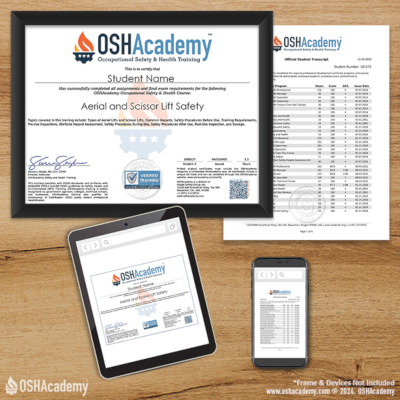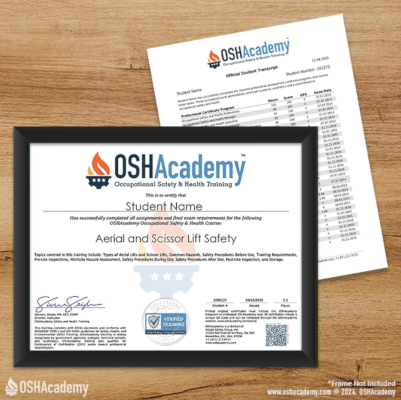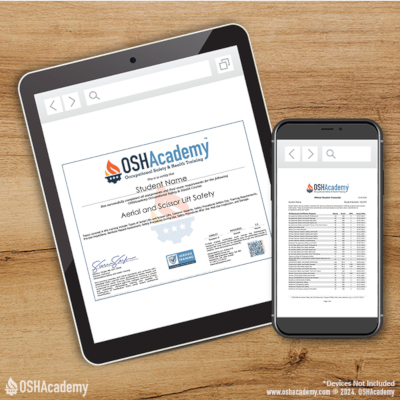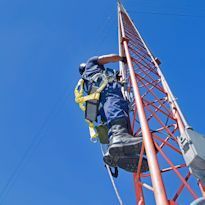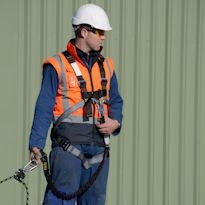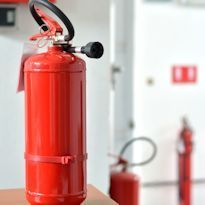680 Aerial and Scissor Lift Safety
Aerial and scissor lifts are increasingly used on job sites as a more mobile and flexible alternative to ladders and scaffolding. These lifts can be constructed from materials such as metal, fiberglass-reinforced plastic, or other durable substances. Depending on the design, they may be powered or manually operated.
The U.S. Centers for Disease Control and Prevention (CDC) reports that each year, approximately 300 to 400 workers are injured in accidents involving scissor and aerial lifts. Additionally, an average of 20 to 25 workers lose their lives annually while operating this type of equipment. This course contains general information about:
- OSHA standards and common hazards
- types of aerial and scissor lifts
- safety procedures before use
- safety procedures during use
- safety procedures after use
This course is general in nature and not designed to be a substitute for operator training in the operation of specific aerial and scissor lifts. Training on specific lifts should be conducted by competent persons and include opportunities for employees to practice, demonstrate, and be evaluated to certify they have gained the necessary knowledge, skills, and abilities (KSAs) required for proper aerial and scissor lift operation.
Free Access!
As an OSHAcademy student, you have free access to all our training materials, including knowledge checks and course activities. Documentation of your training–such as exam scores, certificates, and transcripts–can be accessed by purchasing a certificate package.
| Modules: | 5 |
| Hours: | 1.5 |
| Sectors: | Construction, General Industry |
Fee
- FREE Access
- $ PDF & Original Certificates
- $ Original Certificate
- $ PDF Certificate
Shipping & Handling not included for original certificate prices.
-
Key Topics
-
Target Audience

